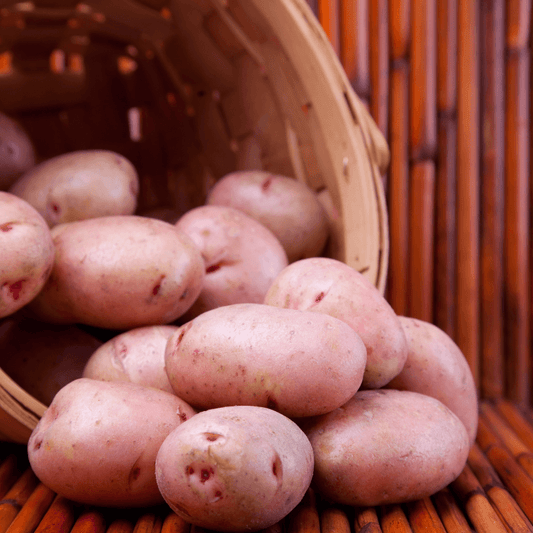Seed Potatoes for Sale – Organic & Non-Organic Varieties
Discover premium seed potatoes for sale — including a wide range of organic seed potatoes, heirlooms, and specialty varieties. Whether you're planting for mashed potatoes, potato salads, or long-term storage, we offer certified seed options that deliver exceptional flavor and performance.
Choose from early, mid, and late-season potato varieties for sale, available for both home gardeners and small-scale growers. Many of our seed potatoes are certified organic, and all are non-GMO and selected for top quality.
Looking for an easy way to get started? Our Organic Potato Growing Kit includes all the essentials.
What Are Seed Potatoes?
Seed potatoes are whole or cut tubers used to grow new potato plants. Each “eye” sprouts into a vine that produces potatoes underground. Unlike true seeds, these are tubers from a previous season — selected for size, health, and vigor.
We offer both organic seed potatoes for sale and conventional types, all inspected and ready to ship seed at the right planting time for your region.
Want to grow from scratch? Our organic potato seeds and kits help beginners get started with confidence.
Not sure when to plant? Use our Growing Zone Finder to check your region.
Popular Potato Varieties for Sale
Early-Season (75–90 Days)
Perfect for fast harvests in cooler climates.
-
Yukon Gold – Smooth yellow skin, yellow flesh, buttery flavor; excellent for mashed potatoes and roasting.
-
Red Norland – Smooth red skin, white flesh; great for potato salads.
-
Purple Violet – Striking purple skin; beautiful and flavorful in any dish.
Mid-Season (90–120 Days)
Reliable growers with well-rounded flavor and texture.
-
Burbank Russet – Classic starchy potato; perfect for fluffy mashed potatoes or baking.
- Kennebec – Versatile all-purpose potato for frying, boiling, and more.
-
Yellow Finn – Yellow flesh and creamy texture; excellent sautéed or boiled.
Late-Season (120–135 Days)
Long-maturing types ideal for storage and large harvests.
-
Russet Norkotah – Ideal for baking, frying, and hash browns.
-
Purple Majesty – Deep purple skin and flesh; packed with antioxidants.
-
German Butterball – Smooth texture, buttery flavor; perfect for creamy mashed potatoes and roasting.
Specialty & Fingerling Potato Varieties
Add variety with unique colors and textures. Many of these are organic potatoes, and all are great for creative cooking.
How to Grow Planting Seed Potatoes
Growing healthy potato plants starts with the right conditions:
-
Soil: Loose and well-draining with a pH of 4.8–6.5
-
Sunlight: At least 6–8 hours of full sun each day
-
Spacing: 12–15 inches apart, planted 3–4 inches deep
-
Timing: Plant in early spring when soil hits 45–50°F
-
Care: Hill soil up around stems, mulch to retain moisture
-
Watering: Keep soil consistently moist but not waterlogged
Need guidance? See our How to Grow Potatoes page and Potato Growing Guide.
Why Buy from Us?
- Wide variety of potatoes for sale — including organic and conventional
- Many options are certified organic and/or certified seed
- Early, mid, and late-season potato varieties for sale
- Great selection for home gardeners and market growers
- Options with yellow skin, red skin, and purple skin
- Unique flavor profiles like buttery flavor and creamy textures
- Trusted favorites like Yukon Gold, Red Norland, and German Butterball
- Ready to ship seed when planting season arrives
Grow flavorful, colorful, and productive crops — explore our complete selection of organic and non-organic seed potatoes. Shop All Seed Potatoes
 Sold out
Sold out Sold out
Sold out



























